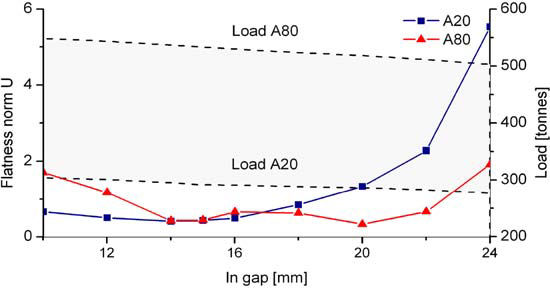Optimisation of Finishing Processes for Eliminating Rectification of Plate and Section Products (OPT
- jmajta
- 21 lip 2017
- 2 minut(y) czytania

The project is aimed at an improved understanding of the evolution of microstructure, material properties, internal stress/strain fields, flatness and squareness, during hot rectification and cooling of plates and sections, establishing the sensitivities of product condition at entry to cold rectification. Hot rectification and cooling processes will be optimised to achieve required mechanical and dimensional properties, thereby reducing or eliminating the need for cold rectification. Warm rectification will also be considered as a mean to increase throughput and reduce mechanical work on finished products. Regime maps will be developed covering key products and grades, and selectively tested in industrial conditions.

The research presented is part of the larger RFCS Optifin project that is aimed at an improved understanding of internal stress/strain fields, evolution of microstructure, material properties, flatness and squareness during hot rectification, and cooling of plates and sections. This work is focused on development of an accurate and realistic model for simulation of the hot and cold levelling processes. Computer aided technology design is an efficient tool to achieve required mechanical and dimensional properties, thereby reducing or eliminating the need for further cold rectification. Numerical modelling of material behaviour during thermomechanical processing is widely used in experimental research and in industrial applications. However,accuracy of simulations depends, to a large extent, on the correctness of the description of material properties, as well as mechanical and thermal boundary conditions. All the major mechanisms that are responsible for material deformation have to be taken into account in the material model that is used during simulations. A discussion of mechanisms that occur during large cyclic deformation is given in. Hot and cold levelling operations are examples of processes with small cyclic deformation, and in this case the Bauschinger effect has to be considered. That is why a material model based on a nonlinear combined hardening law that takes into account the mentioned phenomenon is used during industrial simulations. Another important issue is accurate identification of parameters of the selected material model. Two approaches based on half cycle test data and stabilised cycle test data are usually used during the identification procedure in industrial conditions. In these cases, the identification procedure is fast, but the question of accuracy remains open. That is the reason why in this work a solution based on inverse analysis is proposed, and the obtained results are compared with the mentioned approaches. Finally, the proposed hardening model is used during development of the levelling operations that will reduce the need for additional cold levelling.


Komentarze